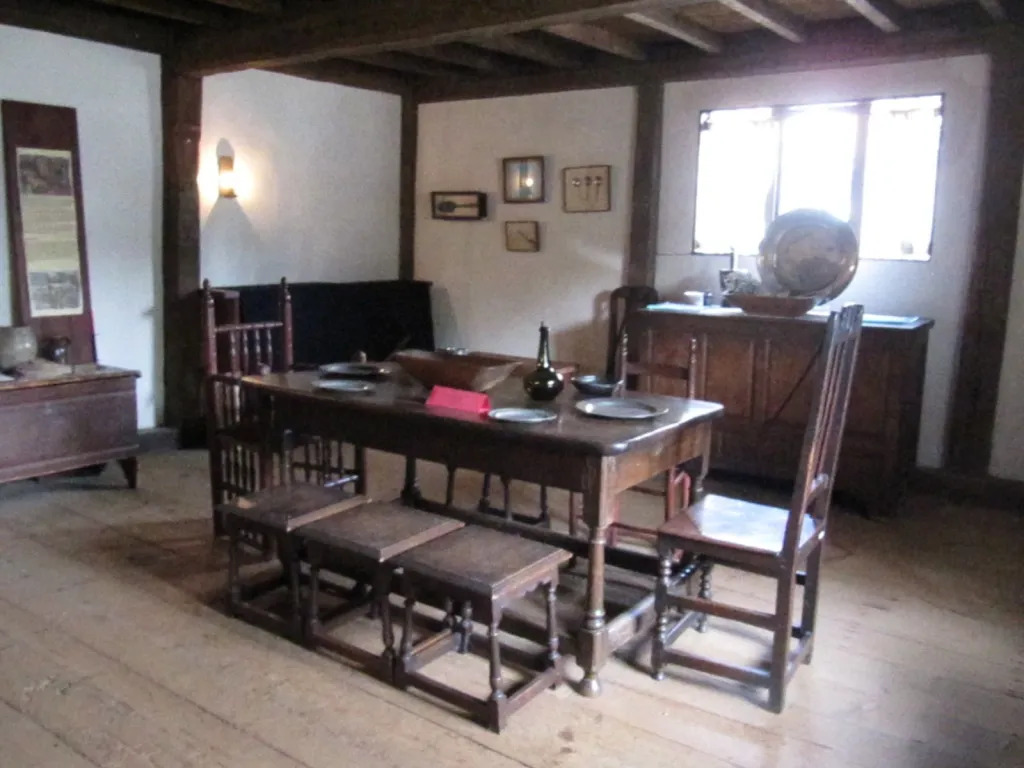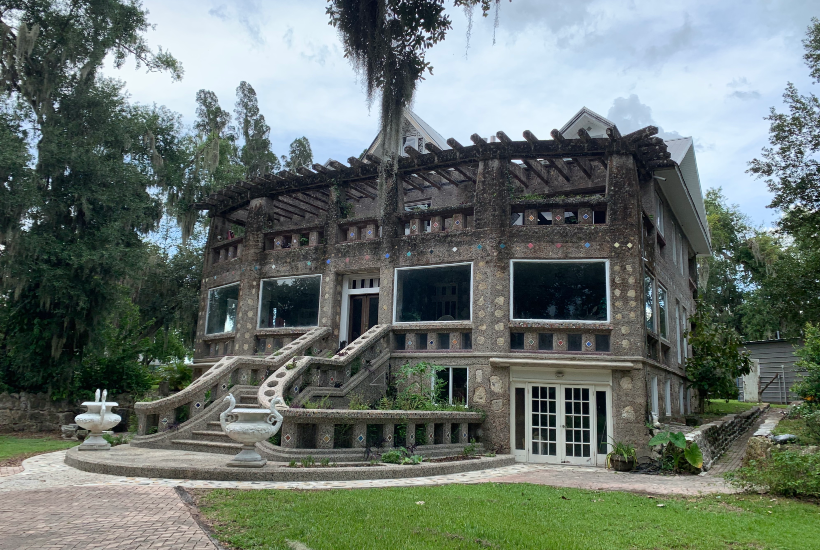The Witch House is the only structure still standing in Salem that has direct ties to the Witch Trials of 1692. It was once the home of Judge Jonathon Corwin, who served on the Court of Oyer and Terminer, which ultimately sent nineteen women to the gallows.

The History Of The Witch House
The Jonathon Corwin House, known locally as The Witch House, is located at 310 Essex Street in the town of Salem, Massachusetts. It is believed to have been built sometime between 1620 and 1642, but the exact year is difficult to establish. Over the years, the property has changed dramatically; however, the original building still stands today.
In the early years of the property’s history, the house was owned by Roger Williams, the Englishman who founded the Providence Plantations in 1636. In 1638 he also founded the First Baptist Church in America, also located in Providence.

Statue of Roger Williams at Roger Williams University, Bristol, Rhode Island
Williams was a staunch advocate of religious freedom, separation of church and state, and fair dealings with the American Indians. Williams even studied the language of the New England Indians, later publishing the first book-length study of it in the English language.
After his death in 1683, at the age of 79, Roger was buried behind the house he lived in at the time of his death (not The Salem Witch House). The house was later torn down, and in 1860 his body was moved to a crypt at the North Burial Ground in Providence. Then in 1939, he was buried for a third time! This time underneath a memorial statue at Prospect Terrace Park in Providence, Rhode Island.

The memorial at Prospect Park, where Rodger Williams is now buried.
In 1675, the property was purchased by Jonathan Corwin at the age of 35; he would live there for more than 40 years. The property would then go on to remain in his family until the mid-19th century before finally finding new owners.

Jonathan Corwin
However, it was in the year 1692, during Corwin’s time at the property, that the house would become infamous due to his part in the Salem Witch Trials.
The Salem Witch Trials
When reports of witchcraft began to circulate in Essex County, Corwin was one of the magistrates called upon make preliminary inquiries into the reports.
Corwin and John Hathorne, another local magistrate, held hearings in March 1962 in which testimony was gathered from three women. Sarah Good, Sarah Osborne, and Tituba, an enslaved native woman, became the first three women to be accused of being witches.

Tituba was a slave believed to have been from Barbados and one of the first people accused of witchcraft for making a ‘witch cake.’
Corwin would later sign several arrest warrants and transcribed a few hearings, but the scarcity of records from 1692 makes it impossible to determine Corwin’s overall role in trials, as well as his stance towards the evidence provided.
By October 1692, the Court of Oyer and Terminer had sent nineteen people to the gallows before eventually being disbanded. Another, Giles Corey, was pressed (crushed) to death in the only known case in American history.
The Witch House In The 20th Century
In 1944, the City of Salem wanted to enlarge North Street, which would have meant the demolition of The Witch House. At this point, the property was also used as a store, with a storefront facing the street.

The property as it looked when it featured a store on the street (yes, it’s the same house).
Thankfully, a group raised $42,000 to save both The Witch House and neighbouring Bowditch House. Both houses were moved back from the road about thirty-five feet from their original locations.

The property as it looked after being moved to its new location, just thirty-five feet back from the road.
After the property was moved, some major renovation was done to the front of the Witch House, leaving it unrecognizable; however, it is still the same house.

The Witch House, after being moved and then restored in the 1940s, looks very different from what it once did.
The Witch House Today
The Witch House then opened as a museum in 1948, which it remains today. While nobody accused of witchcraft has ever lived at The Witch House, it remains an interesting historical site. Visitors to the museum can take a tour of the property; there is also an extensive online store that sells a large collection of memorabilia.







